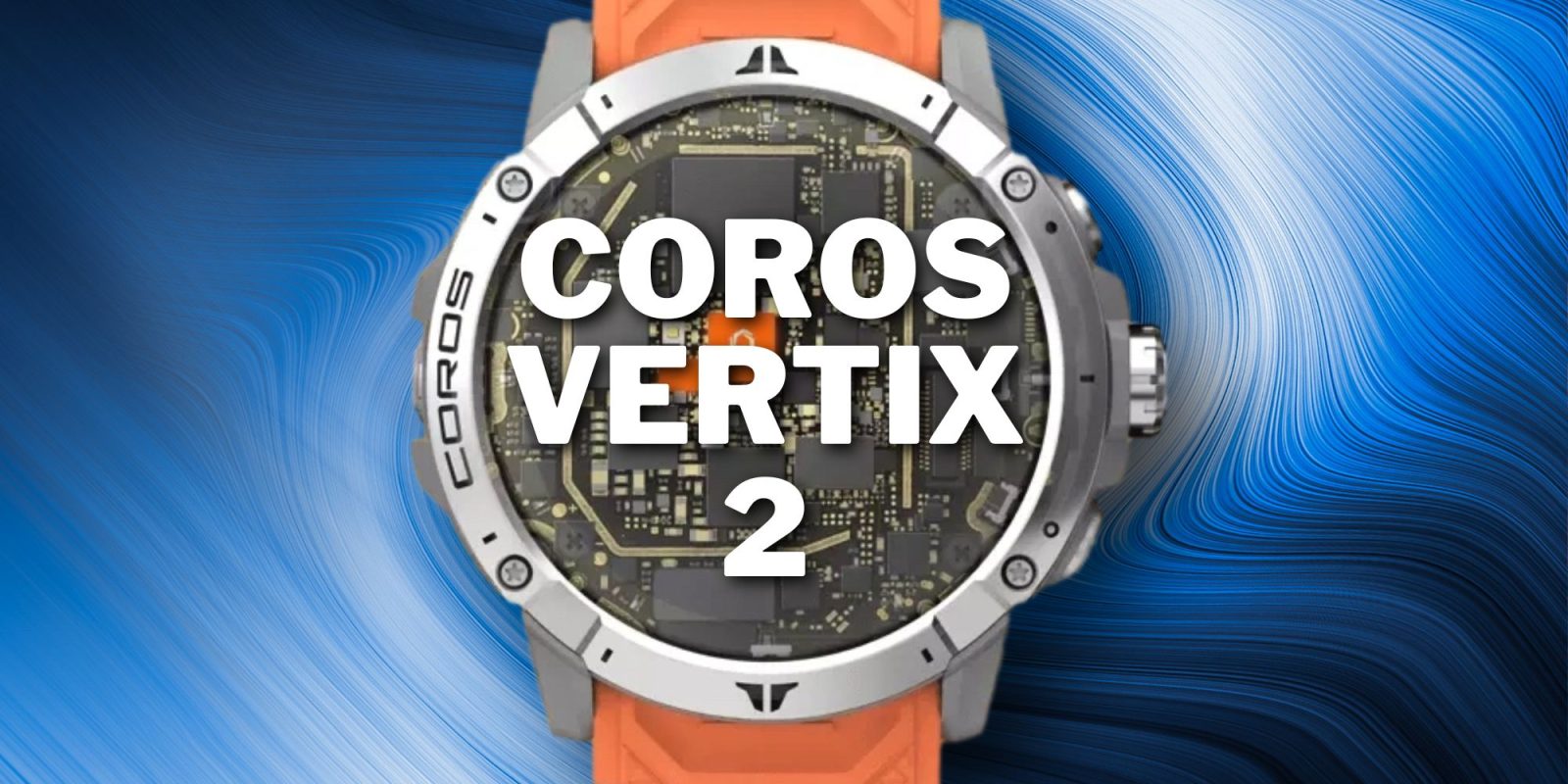
After reviewing the COROS PACE 2 (which I loved, by the way), I immediately wanted to try out the the company’s premium GPS watch: the COROS VERTIX 2.
Given that the VERTIX 2 is currently three times the price of the PACE 2, I was curious to see how much more it offered and what additional features could justify such a large jump in price. Over a month later, here is what I found.
Table of contents
COROS VERTIX 2 video review
Subscribe to Connect The Watts for more connected fitness news, updates, tips, and guides
A quick overview of the COROS VERTIX 2
The VERTIX 2 is certainly upgraded in a lot of ways. There’s an improved larger touch screen, unbelievably long battery life, navigation features, HRV tracking, advanced GPS options, music playback, and more. This device absolutely seems like the best watch COROS has put out, and they did so with a steep price tag.
Outdoor endurance enthusiasts who deal with elevation changes and rely on navigation may be the only users who could get enough out of the VERTIX 2 to make the $700 cost a value. I found a lot to love about this watch. Maybe because I had just reviewed the COROS Pace 2, which has so much value for the price, I considered the VERTIX 2 price point too much, and that left me underwhelmed.
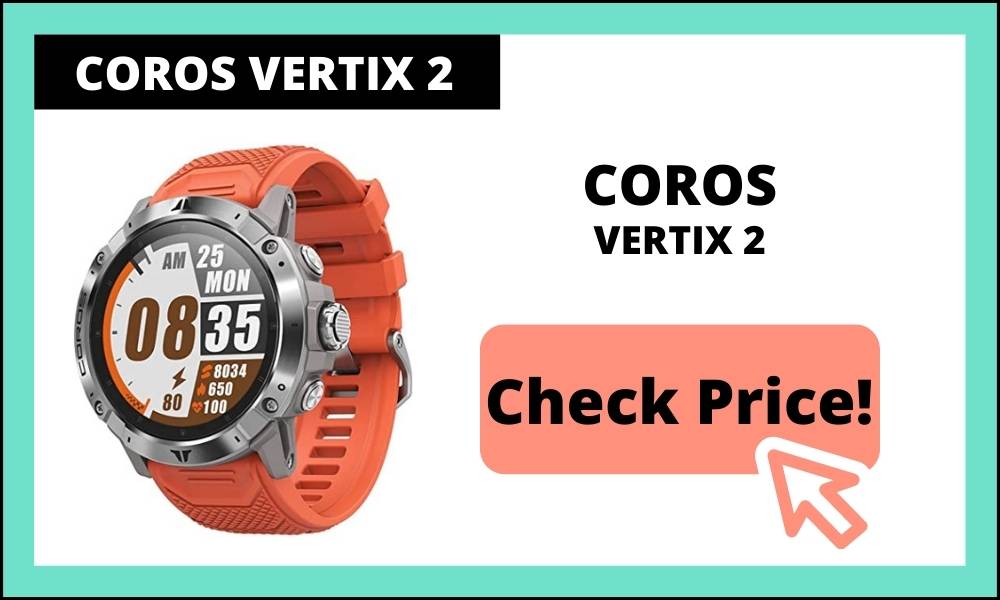
COROS VERTIX 2 specs
| Display Size | 1.4 in. 280 x 280 (64 colors) |
| Physical Size | 50.3 x 50.3 x 15.7mm |
| Display Type | Touch Screen Always-On Memory LCD |
| Screen Material | Diamond-like Coating Sapphire Glass |
| Bezel & Cover Material | Titanium Alloy with PVD Coating |
| Wrist Strap | 26mm Silicone or Nylon |
| Weight | 89g w/Silicone Band 72g w/Nylon Band |
| Phone & Accessories Connection | Bluetooth |
| Geo Location | Satellite Systems: GPS, GLONASS, Galileo, Beidou, QZSS GNSS Chipset: All-satellite Dual-frequency |
| Navigation | Map Layer Landscape, Pre-loaded Global Maps Topo, Downloadable Regional Maps |
| Sensors | Optical Heart Rate Monitor Barometric Altimeter Accelerometer Gyroscope 3D Compass Thermometer Optical Pulse Oximeter Electrocardiogram Sensor |
| Water Resistance | 10ATM (100 Meters/328 Feet) |
| Charging Time | Less than 2 Hours |
| Battery Life | Daily Use: 60 Days UltraMax GPS Mode: 240 Hours Standard Full GPS: 140 Hours All Systems On: 90 Hours All Systems + Dual Frequency On: 50 Hours |
| Warranty | 2-year limited warranty |
COROS VERTIX 2 design
Comfort
The COROS VERTIX 2 is a hefty watch meant to withstand some tough environments with its 1.4 inch display and 72–89g weight. It’s definitely not as comfortable to wear all day as the COROS Pace 2, which weighs only 29g. That said, for its size, I consider the fit pretty comfortable. Once I got used to it, it didn’t feel too large for everyday use in addition to use while training.
Early into my use of the VERTIX 2, I found myself hitting the buttons on the side when my wrist went into extension when riding a bike or lifting weights. COROS considered this and made available an easy fix. I was able to change the way in which I wore the watch, moving the buttons to the outside, and changing the display settings in the watch’s menu to correct the screen’s orientation.
Controls
The COROS VERTIX 2 has three buttons, including one that doubles as a digital dial. Each button is capable of multiple functions depending on the screen currently displayed or if the button is held rather than pressed. It all felt very straightforward and was easy to learn.
I especially appreciated the top button, which functions both to turn on a backlight and to bring you to your chosen custom widget. It’s very convenient to be able to create a quick shortcut to an often-used widget of your choice, like the music player.
There are also some touch controls available on the screen. Thankfully, you can choose to use the touchscreen to swipe between metric screens during workouts, rather than try and use the digital dial. The screen is a much bigger target to use as a control at times when your fingers are less nimble.
The COROS VERTIX 2 touch screen capability also makes it very easy to manipulate the map when using navigation. Moving the map and zooming in or out can easily be done while still in motion.
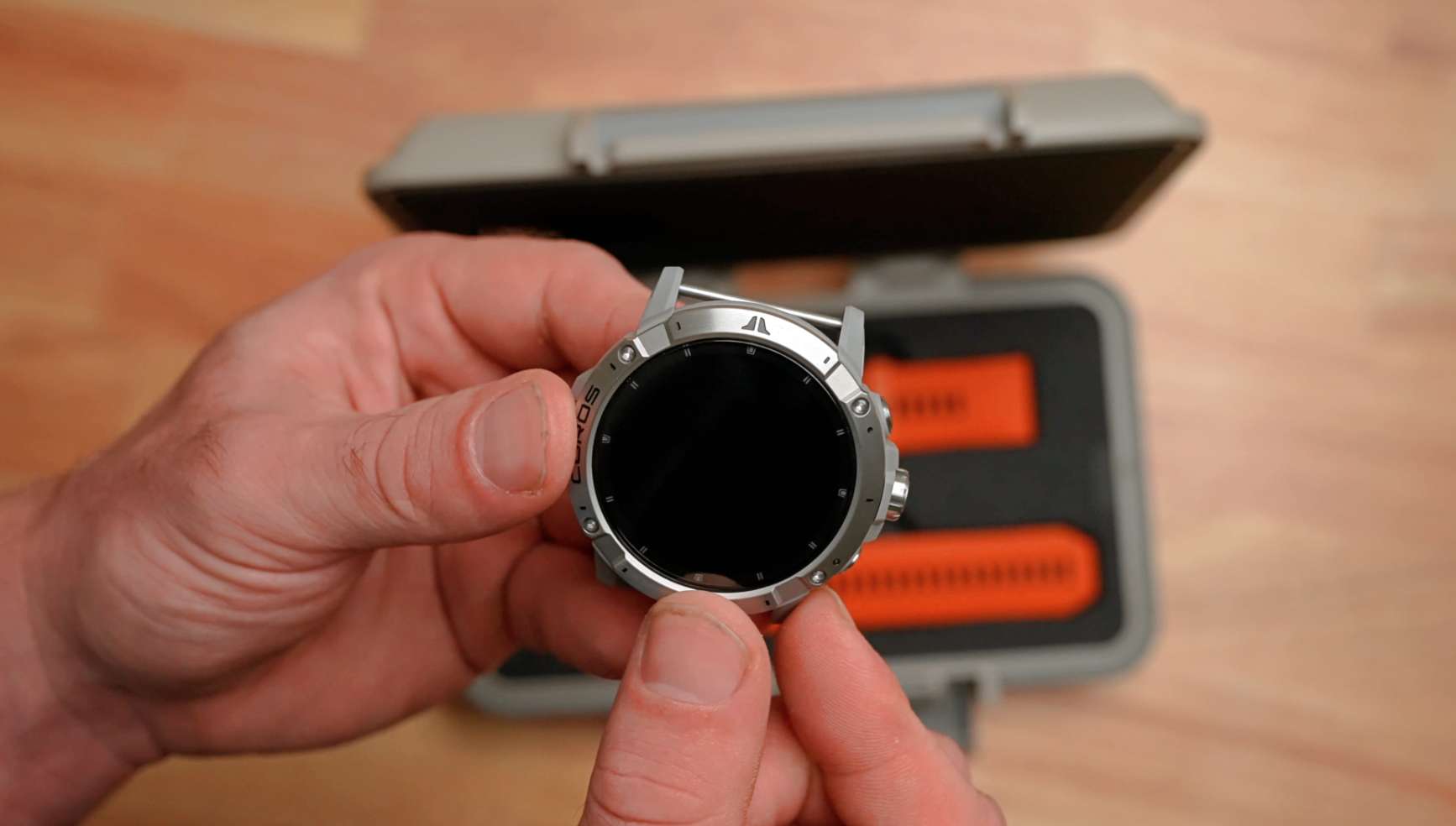

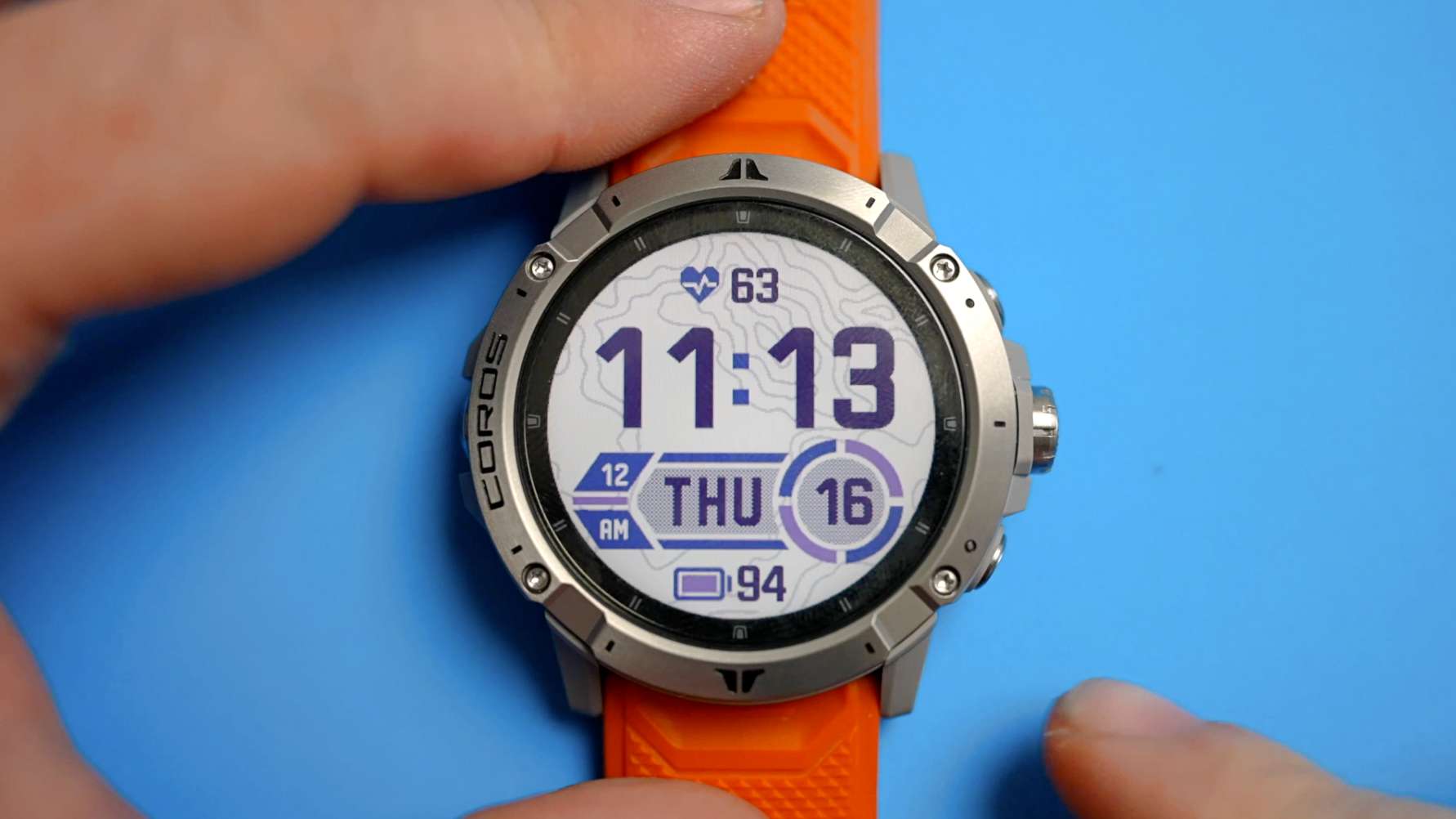
Battery life
The battery life of the COROS VERTIX 2 is incredible. With an estimated 60 days of regular use, I haven’t yet needed to purposely charge it. I did accidentally recharge it to 100% when I had it plugged into my computer to load podcast files onto it, though.
COROS VERTIX 2’s several GPS options can increase or decrease the battery life. Most users will likely keep the GPS set to the suggested “All Systems On,” which connects to five coordinate systems and allows the battery to last 90 hours while actively in this mode.
Users who will be using the watch near walls (enclosed areas) or overhead structures, like when mountain climbing, may want to use the “All Systems On + Dual Frequency On” mode. This is needed in order to get better vertical accuracy but causes the batter to last only 50 hours of active use in this mode.
And for those who prefer the longest battery life possible, but still wish to use GPS, you can select the less accurate UltraMax GPS Mode, which allows for 240 hours of battery life actively using this mode. Though with a battery this big, I never felt the need to use this mode when enabling GPS.
Using the COROS VERTIX 2
Interface
COROS VERTIX 2 has a variety of watch faces to chose from, and they all look pretty good even when not backlit. On the main screen you see the time, date, and battery level. Here you can rotate between metrics like daily steps, calories burned, and current heart rate, among others.
The button that doubles as a digital dial allows you to scroll through running-specific metrics and a variety of other widgets, including sleep tracking, altitude, barometric pressure, and temperature. Many of these widgets allow you to scroll though data taken over the past six hours. And even that duration can be further increased to 12 or 18 hours in Settings.

COROS VERTIX 2 gives you the ability to edit which widgets you see displayed and in which order for scrolling through. This increased level of customization is an appreciated feature. I was able to create a watch that felt built around my needs.
Navigation
The COROS VERTIX 2 offers map and route guidance, available to the user any time, not just when in a workout. Map style can be set to Landscape, TOPO, or a Hybrid of the two. You can choose to have the top of the watch set to the direction you’re going or always set to north.
When using route guidance in a workout, the VERTIX 2 will continue to alert you if you have deviated too far off course. When that happens, you will see arrows on the map to help direct you back onto the correct route.
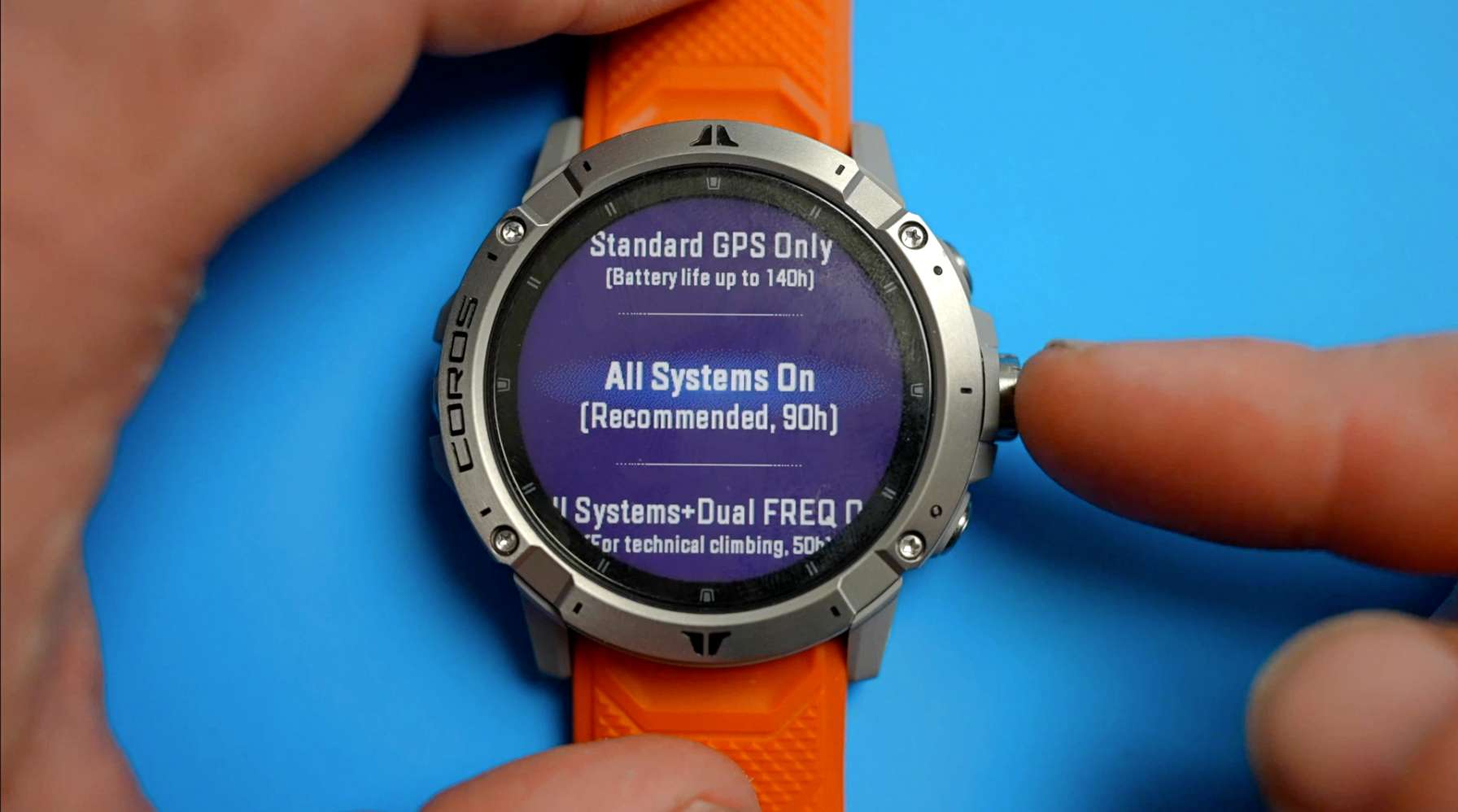
You can choose to have the VERTIX 2 direct you back to where you started, even when not following a preplanned route. This is definitely useful on trails and makes it very easy to head home at any point if you decide to cut a workout short.
During a workout, if you swipe up once on the map, you will see an overview of your route’s elevation. This gave me a sense of where I was in my workouts and what I could expect coming up – all very useful when deciding on my pace.
Swiping up from there, you enter the first of up to six preset metric screens. I’ll dig further into this later when I go over the COROS app.
GPS accuracy can be hard to fully determine given the variables of terrain, length of use, GPS Type, verticality, etc. But in my testing (which, to be fair, was a little more limited than usual due to a recent ankle sprain), the VERTIX 2 seemed to be the most accurate of a few other options including the Apple Watch and TicWatch Pro3.
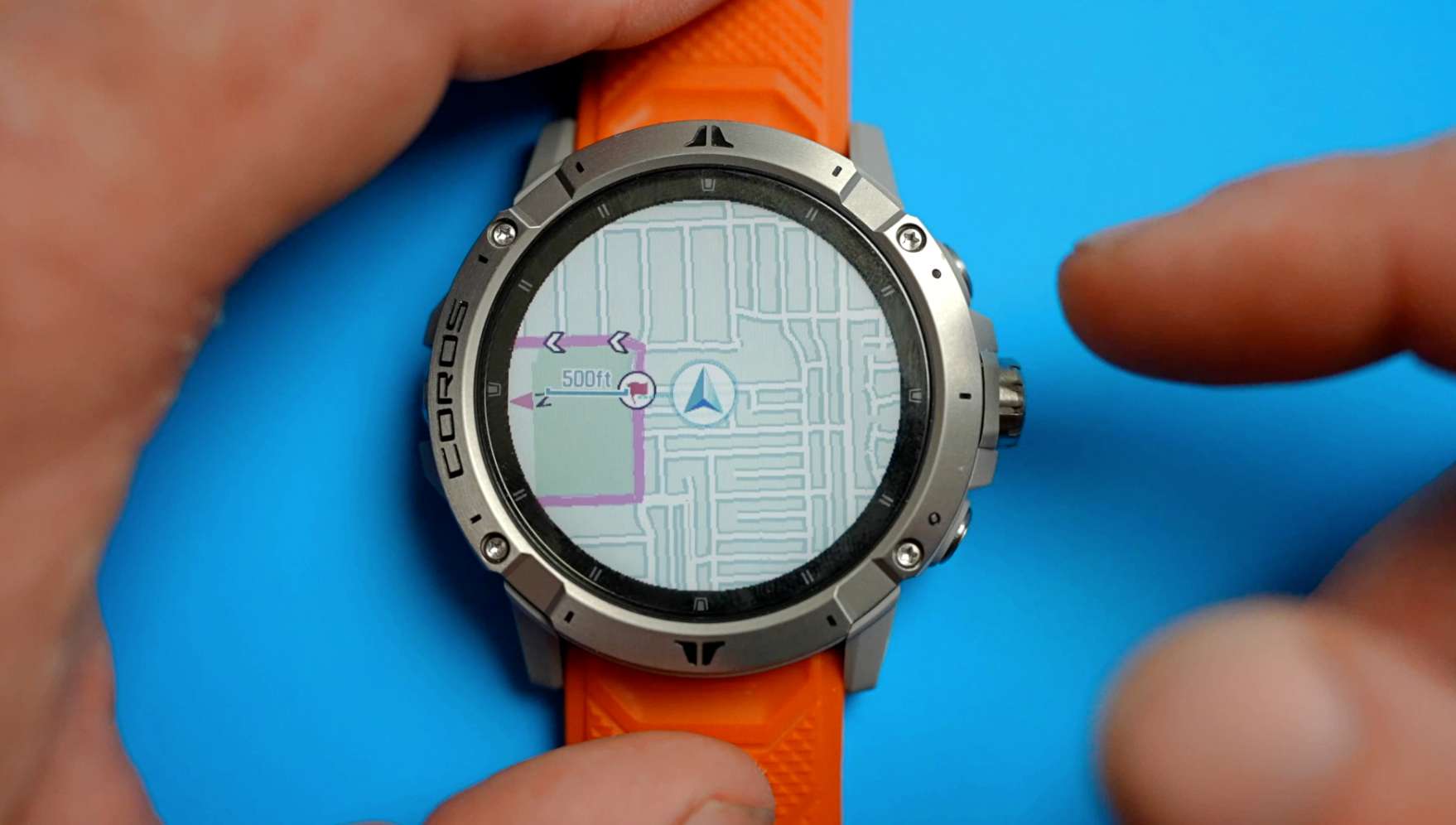
Heart rate
While I found the GPS to be solid, the heart rate accuracy left a bit to be desired. For the most part, it was more dead on than others, but there were a lot of occasions where the accuracy would just fall off. The best I can surmise is it has to do with wrist placement.
When the heart rate sensor came closest to my wrist bone, the beats per minute would start to quickly drop off. Even when I knew this and tried to prevent it, it would still happen more than I would have liked. This wasn’t an issue so much when running, but it happened fairly frequent when rowing, biking, or strength training.
The VERTIX 2 is able to broadcast your heart rate to other devices, which I found to be reliable, and the connection remained stable throughout the entirety of a session.
Music
One of the standout features of the COROS VERTIX 2 is its ability to store and play audio. It allows you to connect any bluetooth headphones and, since the music files are located on the VERTIX 2 itself, they can be played no matter where you are without cellular or internet.
The problem is, there’s no integration yet with any of the streaming services, like Spotify. So instead of downloading from a streaming service to play media offline, you have to provide your own MP3 files. And, if you’re like me, you really don’t have any.
Instead of listening to music, I found it more practical to upload podcasts. There is an easy way to get those mp3 files online (check out my guide to learn how).
And, while the VERTIX 2’s ability to store mp3 files is a nice addition, it probably isn’t going to be exciting to most people who use streaming services like Spotify or Apple Music.
Connectivity
One unfortunate change to the VERTIX 2 over its predecessor is no more ANT+ connection support. VERTIX 2 only supports bluetooth. While this was not an issue for me, it will be for those of you who use ANT+ only accessories like specific heart rate monitors or have invested into ANT+ only power meter pedals for your bike.
Sleep tracking
The COROS VERTIX 2 is able to track your sleep, which includes showing a break down of your light, deep, and REM sleep. The sleep tracking seems to work well in terms of determining when you fall asleep and wake. I did see issues with it capturing sleep data when I would briefly wake up and then go back to sleep.
In terms of accuracy for light, deep, and REM sleep, most wearables are pretty far from accurate, and I wouldn’t trust the COROS here either. This is especially true considering the VERTIX 2 only measures your heart rate once every 10 minutes when not working out.
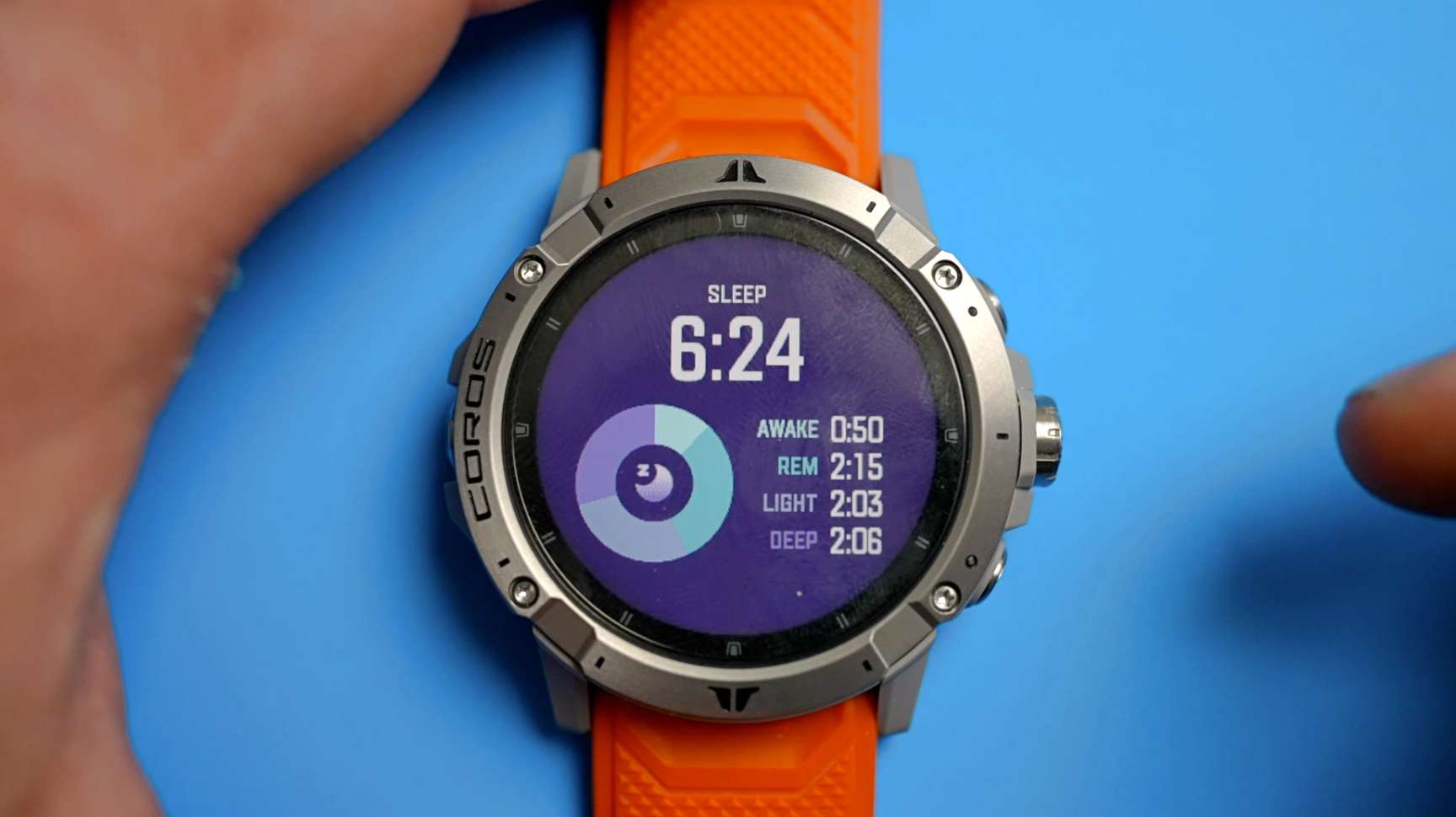
HRV tracking
New to the VERTIX 2 is the capability to record and track your Heart Rate Variability (HRV). HRV is a metric I value very highly in helping determine my physical readiness. It gives me insight into what sort of adjustments I may want to make with my training plan.
The VERTIX 2 HRV test takes 60 seconds and has to be done manually first thing in the morning, ideally before getting up. While this is reasonable, it can be difficult to remember. I’m used to other devices like WHOOP, which takes this measurement automatically while you are asleep.
More often than not, I would forget to take the HRV test until it was too late to get an accurate reading. I wish you could set a reminder on the VERTIX 2 itself that tells you upon waking to not get up and take your HRV reading.
Training
The expansion of available training types on the VERTIX 2 includes the widest variety of outdoor and indoor training options offered by COROS. With dozens of options to choose from, and each with their own settings and specific metrics, there is something here for pretty much everyone.
Each training mode can also be completely customized with up to six unique screens. This way you can see whichever metrics you’d like in your preferred layout.
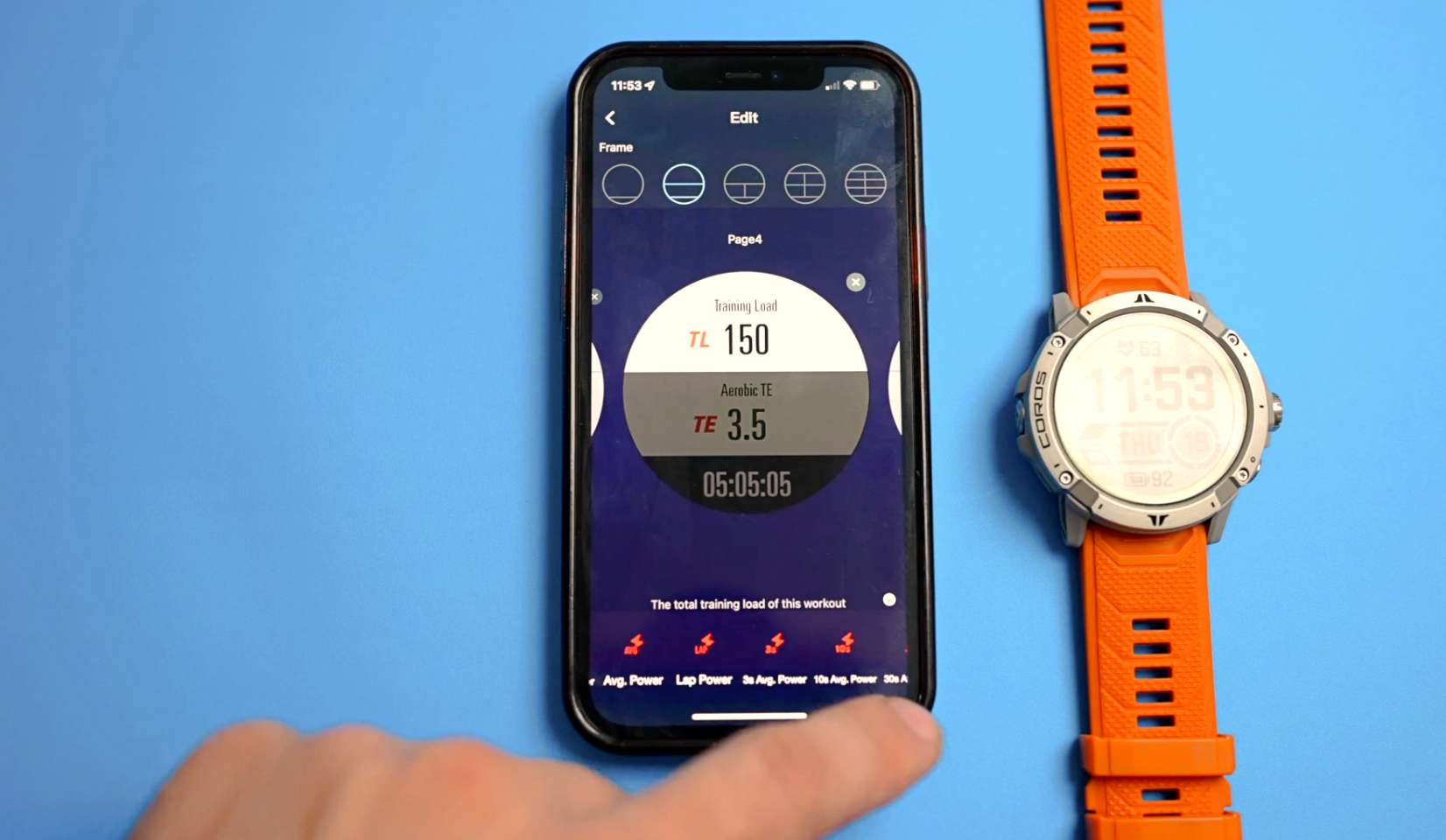
Runs
One of the big reasons to get the COROS VERTIX 2 over some lower cost options, like the COROS Pace 2, is if you are a trail runner, hiker, mountain climber, or really anyone who deals with a lot of elevation.
For trail runs, not only do you have navigation options but also improved GPS capabilities. These include Dual Frequency GPS, which can help really dial in your 3D distance, or vertical distance you travel, to make your metrics a lot more accurate.
In addition to trail runs and regular run mode, there’s indoor run mode for treadmills and track run mode for … well, track runs. Indoor runs can send your metrics info out to third parties like Zwift. And, track mode is equipped to give you very accurate split times, as the VERTIX 2 allows you to select the exact lane you are running in.

Mutlisport
COROS Multisport mode allows you to mix and match up to five workout types for a session. This is similar to triathlon mode, except you have all the options available to you, not just the big three.
It’s easy to see how this can be useful. A person who likes Crossfit-style training could set up a Murph type workout (running, pushups, pull-ups, squats) and be able to analyze their runs separate from their bodyweight movement circuit.
Strength
The COROS VERTIX 2 strength mode is so close to being useful but falls short. You can write complete workouts with the app and have them displayed for you to follow. Or without a written plan, I use it to keep track of reps and rests and am even able to select the body part being focused on for each movement.
The shortcoming is that it relies on automatic rep tracking, which is rarely accurate. And there’s no way that I’ve found to be able to adjust the reps after a set. Being able to true up the numbers after a set seems like a no-brainer for COROS to include here.
That issue, paired with no way to really track the weight you used as you go, causes strength mode falls short of being super useful. I still use this mode, mostly to keep me updated on my rest times, but I could also just use a stopwatch for that.

COROS app
The COROS app is a simple, yet useful companion to the VERTIX 2. You can dig in to various daily metrics a bit more than you can on the watch. This is also where you can get an analysis on your running performance via the COROS “EvoLab.”
EvoLab gives estimated race times and splits, v02 Max, Threshold pace, Threshold HR, Resting HR, and a wide variety of other training and recovery metrics. The many metrics can be a lot when you are just getting started, but if you take the time to read through the details laid out by COROS for the data points, it’s easy to learn what’s what.
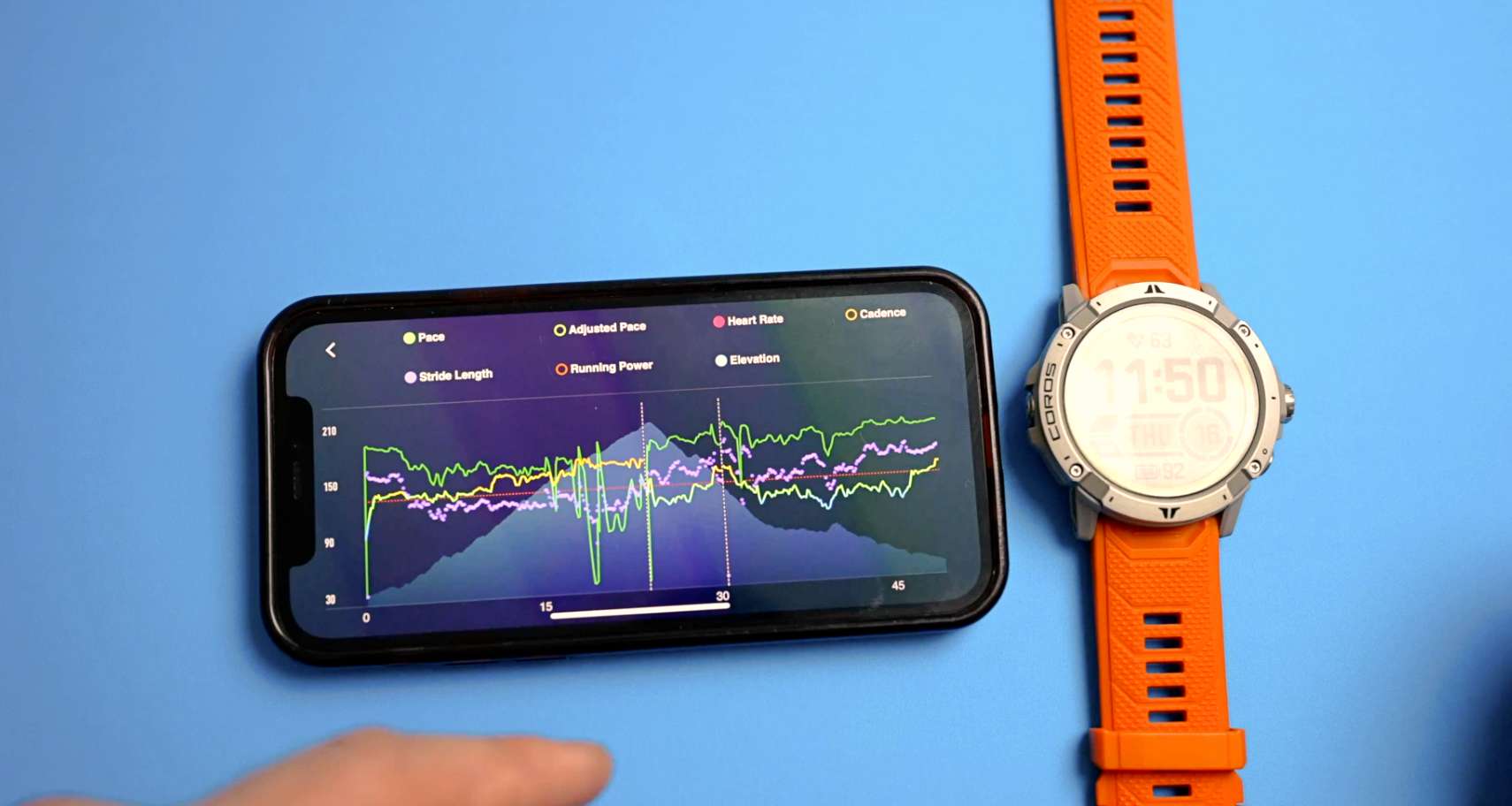
Creating routes
In terms of creating routes, unfortunately there is no ability to build routes on the COROS app itself. Luckily it is easy to pair COROS with third party apps, like Strava, where you can create routes.
Routes completed on compatible third party apps are sent over to the COROS app, where they’re available for adding onto your watch. You can have up to 10 routes on the VERTIX 2 at any one time, and pretty much unlimited routes loaded onto the app itself.
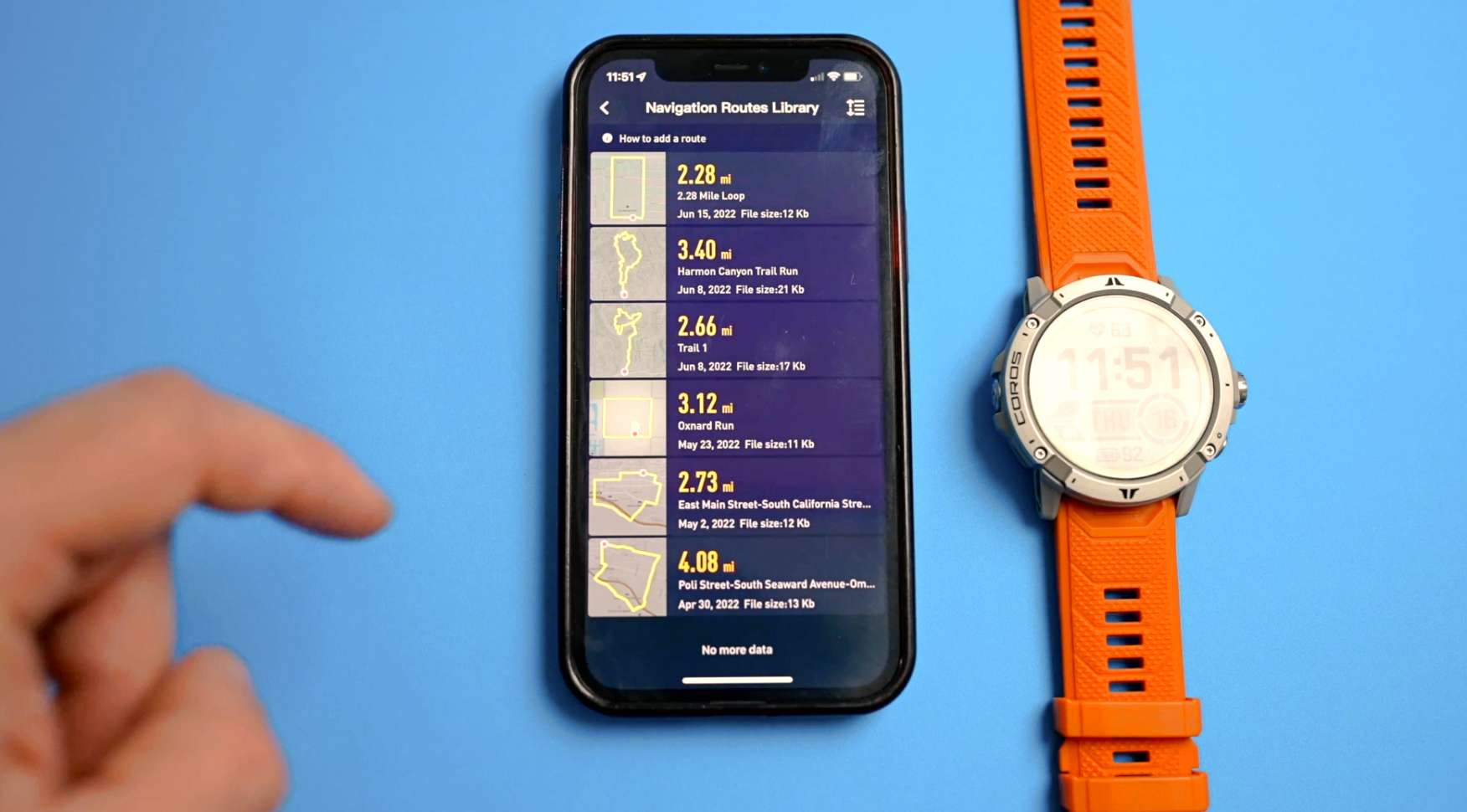
Training calendar and workout builder
Within the app is a training calendar and workout builder to help you keep workouts organized. The workout builder is straightforward and easy to use, especially for non-strength workouts. Building a strength workout takes a little more effort and, with no way to adjust the weights or reps completed during or after the workout, I’m not sure it’s worth it.
You can access all of these features on the website as well, which can make it bit easier to create workouts. You can also share, download, and import workouts to the app easily with QR codes. COROS has a ton of pre-built training plans you can access and import here.
Customization
The COROS app also allows you to further customize the VERTIX 2. You can choose to hide various widgets or workout types that you don’t use, which makes using the COROS VERTIX 2 more streamlined.
The most useful customization is being able to create up to six metric screens for each workout type. There is also a variety of watch faces to choose from. You can have five uploaded to the watch at any one time.

Final thoughts
Had the COROS VERTIX 2 been around $500, then it would absolutely have been a great value. But, at nearly $700, it feels like a bit of a stretch. Especially since some features, like the limited music playback, lack of ANT+ support, and some minor issues with the heart rate accuracy, seem to set it back.
With its frequent updates, user friendly design, and great GPS accuracy, there’s no question the VERTIX 2 is a solid GPS Watch, but there are several good options at its current price point. Again, maybe I’m too hot off reviewing the COROS Pace 2 (which I feel is a must buy for any runner looking for a watch under $200) to give the costly VERTIX 2 a fair shake.
Overall, you have to evaluate your personal needs to determine if the VERTIX 2 is going to be a good fit for you. If the price is not an issue, you deal with a lot of elevation with your training, and you want a watch that is GPS accurate and whose battery life will last forever, then the COROS VERTIX 2 is probably a great option. If you rarely deal with elevation and are looking for something more budget friendly, then I highly suggest checking out the COROS PACE 2.
Suggested articles:
- COROS adds new public beta enrollment in latest update
- COROS VERTIX 2 – complete guide for beginners
- New COROS Pace 2 Blue Steel version released today
FTC: We use income earning auto affiliate links. More.


